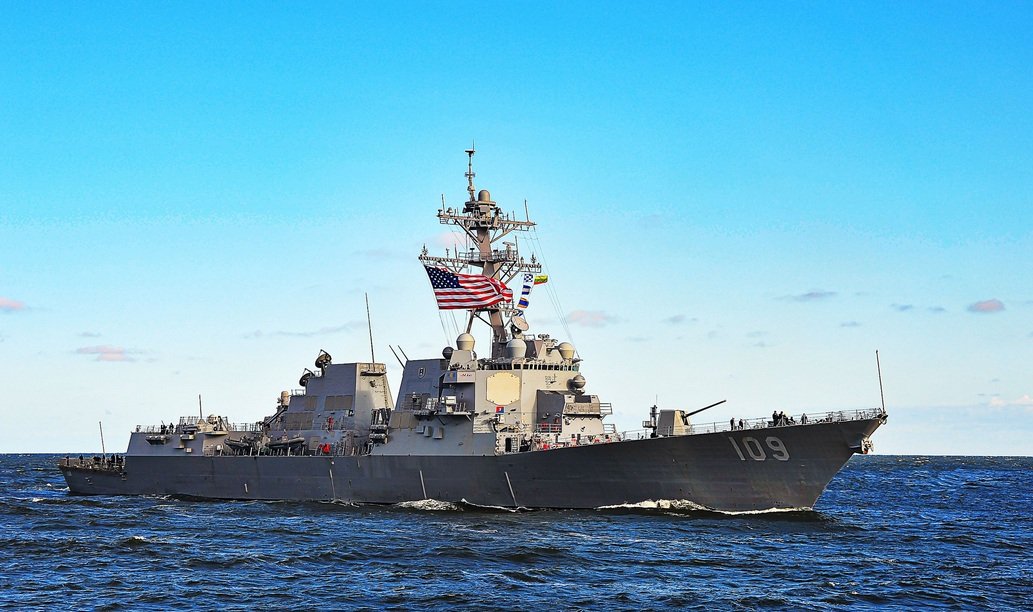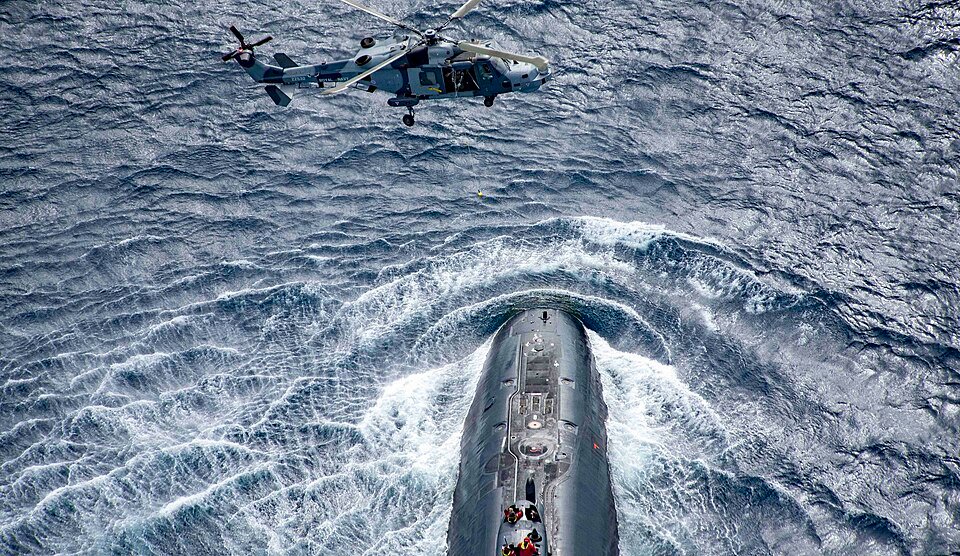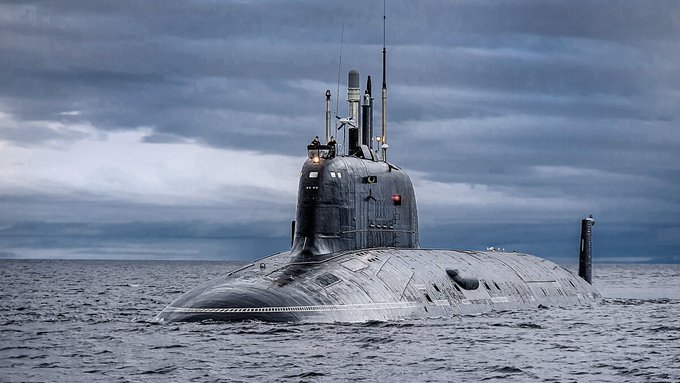
Indian Navy as the future game changer of geopolitics in the world’s oceans
India, May 3, 2025 – India is quietly but steadily building one of the world’s greatest naval powers. At a time when the Indo-Pacific is emerging as a key battleground for global influence, the Indian Navy is emerging as a factor that can rewrite the rules of global geopolitics. How close is Delhi to becoming a true “gamechanger” on the oceans?
Naval forces have long been a major tool for projecting power. From the British Empire to the modern United States, control of the seas has been synonymous with geopolitical dominance. In recent decades, however, the attention of global strategists has shifted to the Indo-Pacific – a region where the economic, political and military interests of old and emerging powers converge. Among them, India occupies an increasingly prominent place. The development of the Indian Navy in the past two decades suggests ambitions that go far beyond the traditional role of defender of home waters. India is investing in aircraft carriers, nuclear submarines, and sophisticated air and missile defense systems. Despite facing a number of internal challenges, its strategic location, growing economic power, and pragmatic diplomacy give it the opportunity to become a key player in the emerging new world order.

Today, the Indian Navy is the world’s seventh-largest naval power, and its ambitions continue to grow. The fleet has about 150 vessels, including two aircraft carriers, one operational nuclear-powered ballistic missile submarine (INS Arihant), and dozens of frigates, destroyers, and corvettes. It is undergoing a massive modernization program that includes new classes of ships, multi-role submarines, and the development of unmanned and space capabilities. India realizes that its geopolitical rise depends on its ability to protect vital sea lanes and maintain freedom of maneuver in key Indo-Pacific naval hubs.
Ambitions and Modernization Programs
The Indian Navy has been openly declaring its ambitions for the past decade to become a fully operational “blue-water navy”, a force capable of projecting power on a global scale. This goal is not just a matter of prestige, but reflects the real need to protect trade routes, energy corridors and India’s interests in the growing geopolitical rivalry in the Indo-Pacific. A key pillar of these ambitions is the modernization program, which includes expanding the fleet of aircraft carriers, nuclear submarines and stealth destroyers. In 2022, the indigenous aircraft carrier INS Vikrant, a symbol of India’s ability to develop complex warships on its own, was commissioned. In parallel, Project 75I is underway, aimed at the development and production of six new submarines with air independent propulsion (AIP), which will significantly increase operational capabilities below the surface. New classes of destroyers (Visakhapatnam class) and frigates (Nilgiri class) are also emerging, built with an emphasis on reduced radar footprint and integrated defense systems. There is also significant investment in the indigenous development of the BrahMos II hypersonic anti-ship missile, unmanned patrol systems, and space-based satellite networks for navigation and communication.

At the same time, India is expanding its network of base and logistics agreements, which is key to a long-term presence on the high seas. Access agreements have been concluded with France (Reunion Island), the Seychelles, Mauritius, and even Oman (Duqm port). India is also developing its own base, INS Baaz, in the Andaman and Nicobar Islands, from where it can control the strategic Strait of Malacca – a key maritime “artery” for global trade. These steps show that the modernization of the Indian Navy is not an end in itself, but part of a broader geopolitical vision in which India seeks to become a decisive player in the Indo-Pacific and in the global balance of power system.
Geopolitical context: The Indo-Pacific as a hot epicenter
The importance of the Indo-Pacific as a key geopolitical area is growing rapidly. The region, stretching from the east coast of Africa to the west coast of America, is home to the world’s most important sea routes, through which most of the global trade in energy and goods flows. For example, approximately 30% of all world maritime trade sails through the Strait of Malacca every day. It is in this space that the interests of old and new powers – the USA, China, Japan, Australia, but also India – increasingly meet. With the growing militarization of the South China Sea, China’s construction of artificial islands, and Beijing’s push to control the wider Indo-Pacific, the region is becoming the epicenter of a global competition for influence and freedom of movement.
India is emerging as a natural counterweight to Chinese expansion in this dynamic. While China is building its “String of Pearls” strategy – a network of port facilities and a base from Pakistan to Sri Lanka to East Africa – India is responding by building its own strategic partnerships and strengthening its presence in the region. In this context, the importance of the Indian Navy becomes absolutely essential: it is the main tool with which India protects its economic interests, promotes regional stability and sends a signal that it is ready to defend freedom of navigation against unilateral attempts to restrict it. The development of alliance ties, such as the strategic partnership with the US, Japan and Australia within the Quad, underlines India’s ambitions to become a pillar of a “free and open Indo-Pacific”.
The current geopolitical climate is thus playing into India’s hands. Various states are looking for alternative powers to help balance Chinese influence, and India is seen as a suitable partner: sufficiently powerful, but at the same time historically non-colonial and striving to preserve an open international system. In this regard, the Indian Navy is not only an instrument for defending national interests, but also a means of building soft power, trust and influence. Its growing capabilities and growing international engagement suggest that in the future competition for the Indo-Pacific, India will play a role that goes far beyond its geographical borders.
Weaknesses and challenges on the path to great power status
Despite the impressive growth and ambitions of the Indian Navy, it faces a number of structural weaknesses that may slow its path to becoming a true global power. One of the main problems is the insufficient capacity of the domestic defense industry. Although India has declared a “Make in India” strategy, a number of key components – from propulsion systems to advanced sensors – are still imported. The result is delays in shipbuilding, rising costs and technological dependence on foreign suppliers, mainly from Russia, France and Israel. This limits the flexibility of modernization and can complicate operational capabilities in the event of geopolitical crises or sanctions.
Another weakness is the structure and size of the fleet itself. Although India operates an impressive number of warships, the ratio between aircraft carriers, submarines, destroyers and logistics vessels is not ideal. For example, there is a lack of sufficient supply ships and specialized landing craft, which limits the ability to conduct long-term expeditionary operations. Similarly, the number of nuclear submarines is still limited – it currently has only one fully operational ballistic submarine (INS Arihant), and several other projects are still in development. In addition, it is questionable whether Indian ships have sufficiently advanced command, control and information systems (C4ISR) necessary for complex operations in the networked combat environment of the 21st century.
Last but not least, India also faces personnel and logistical challenges. Training qualified personnel to operate modern warships and submarines is a demanding process that requires significant investment in education and maintaining a high technical level of crews. Naval bases and infrastructure in some areas are lagging behind the rapid pace of fleet expansion, which creates bottlenecks in the areas of maintenance, repair and support for long-term operations. India must therefore not only focus on further technical modernization, but also on building a comprehensive ecosystem that will support its ambitions to become a true naval power.
India as a future gamechanger on the world’s oceans: a realistic perspective
The Indian Navy is in a unique historical position: it is on the verge of transforming from a regional defense force to an instrument of global power projection. If India can overcome the aforementioned weaknesses, it can become a key player in the new multipolar maritime order. Its strategic location, economic potential and growing military-industrial capabilities give it the prerequisites to influence the future dynamics in both the Indian and Pacific Oceans. The Indian Navy will not only protect its own commercial interests, but can actively co-create the rules of international navigation, including issues such as freedom of navigation, the fight against piracy and humanitarian operations.
However, it is necessary to perceive the time horizon of this transformation realistically. Building a full-fledged “blue-water navy” requires not only finance and technology, but also decades of uninterrupted development, testing and operation. In this perspective, it is likely that by 2035-2040, India will be able to fully compete with the Chinese Navy in the Indian Ocean and partially expand into the South China Sea. On a global scale, however, India will for some time still play the role of primarily a balancing force – a partner for the US, Japan, Australia and other states striving to preserve a free Indo-Pacific, not a fully autonomous superpower.
Nevertheless, it is clear that the Indian Navy will become a key “gamechanger” in the strategic calculations of the great powers. With its rise, not only the balance of power in the Indo-Pacific will change, but also the architecture of global security. Perhaps for the first time in modern history, the maritime space between Africa, Arabia and Australia will be defined not only by Western or Chinese interests, but also by an assertive Indian presence. This shift will have a fundamental impact on global trade, alliance policies and potential conflicts, making the Indian Navy a factor that is already beginning to reshape the geopolitical map of the world’s oceans.


Martin Scholz


















